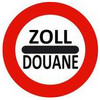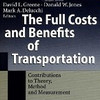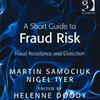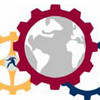 Old classics never die. While some papers are written, published and quickly forgotten (because no one cites them), other papers stand the test of time and survive as classic or seminal papers. A risk/benefit analysis of sourcing strategies: Single vs. multiple sourcing, written by Mark Treleven and Sharon Schweikhart in 1988 is perhaps not the most cited paper since its inception more than 20 years ago (Scopus only comes up with 31 citations), but it is a paper that is cited in the supply chain risk literature until this day, and for a good reason, as it was among the first papers to examine the costs and benefits of single versus multiple sourcing strategies.
Old classics never die. While some papers are written, published and quickly forgotten (because no one cites them), other papers stand the test of time and survive as classic or seminal papers. A risk/benefit analysis of sourcing strategies: Single vs. multiple sourcing, written by Mark Treleven and Sharon Schweikhart in 1988 is perhaps not the most cited paper since its inception more than 20 years ago (Scopus only comes up with 31 citations), but it is a paper that is cited in the supply chain risk literature until this day, and for a good reason, as it was among the first papers to examine the costs and benefits of single versus multiple sourcing strategies.
The early years of SCM
A risk/benefit analysis of sourcing strategies: Single vs. multiple sourcing was written in the early years of supply chain management, when cost savings in procurement and purchasing were what managers focused on, and when the Philips plant fire that bankrupted Ericsson and left Nokia still standing was still more than a decade away. Back then, single sourcing was the mantra of the day. It was in this environment that this article was conceived, and while it tries to maintain a balanced view of which sourcing strategy that is better, single sourcing appears to have the upper hand. That said, the authors do develop an excellent framework for comparing sourcing strategies that is as valid today as it was back then. For more details on sourcing and procurement risks I recommend reading Procurement Risk, part the Gower Short Guides to Business Risks.
Different types of sourcing strategies
The paper starts off with defining the different kinds of sourcing strategies:
- single sourcing
- at most one supplier for each inventory item
- sole sourcing
- only one supplier available (“forced” single sourcing)
- dual sourcing
- only two vendors for the inventory items
- multiple sourcing
- more than two vendors for the inventory items
These types of sourcing are then subject to further evaluation based on a five areas that are of special concern in sourcing. A further refinement of these strategies can be found in Giertz (1999), who also includes double, parallel and see-saw sourcing.
Five areas of concern
The authors identify five areas or categories that must be evaluated before selecting the appropriate sourcing strategy:
- supply disruption
- e.g. are there alternative sources if supply is disrupted?
- price escalation
- e.g. what if the supplier suddenly raises prices?
- inventory and scheduling
- e.g. how will having one or more vendors affect inventory reliability?
- technology access
- e.g. does the vendor keep up with the latest technology?
- quality
- e.g. what if the selected vendor cannot meet quality standards?
For each area pros and cons (or risks and benefits) for the different sourcing strategies must be considered before making a decision.
The Risk/Benefit Assessment Model
In the end, the total impact (risk versus benefit) is calculated as follows:
IT = PdsIds + PpeIpe + PisIis + PtaIta + PqIq
where
- IT = total impact of the sourcing strategy
- Pi = the probability of impact i being realized
- Ii = the impact of the factors in risk/benefit category i
- PiIi = the expected value of the impact of risk/benefit category i
- ds = the disruption of supply risk/benefit category
- pe = the price escalation risk/benefit category
- is = the inventory risk/benefit category
- ta = the technology access risk/benefit category
- q = the quality risk/benefit category
What is interesting with Treleven and Schweikhart’s definition is that the category impacts are noted on a simple -10 to +10 scale, in other words, a purely subjective judgement. That said, the authors do note that
Financial impact was considered as a criterion, but was deemed impractical because of the difficulty in measuring the monetary impact of factors such as quality and technological access.
Confusing to me, the expected values are probabilities ranging from 0% to 100%, which is then an objective statement, which appears to be a bit contradictory to the subjective impact values. The model itself is sound enough though, since essentially this is similar to the classical definition of risk, where risk (R) is defined as as the product of the probability (P) of a loss (loss) and the significance or impact (I) of the loss, related to an event n (n): Rn = P(loss)n x I(loss)n, which is what Harland (2003) used in Risk in supply networks.
Critique
This article is 22 years old, but still going strong. The conclusions and recommendations they wrote in 1988 are not in any way less important today. Sourcing is a strategic decision that may have dire consequences if the cons are not considered alongside the pros. As I already said, while the authors advocate that the choice of appropriate sourcing strategy must be given careful consideration, they still seem to favor single sourcing over the the other strategies. However, they do highlight the pros and cons for each strategy and each area of concern very well, and this article should still be a required reading for all supply chain managers and procurement professionals. FYI, a post on the SCRMBlog features a paper with a newer look on single or dual sourcing in the face of supply chain risk.
Reference
Treleven, M. & Schweikhart S. (1988). A risk/benefit analysis of sourcing strategies: Single vs. multiple sourcing Journal of Operations Management, 7 (3-4), 93-114 DOI: 10.1016/0272-6963(81)90007-3
Author links
- linkedin.com Mark Treleven
- linkedin.com: Sharon Bergman Schweikhart
Related
- husdal.com: Risk in supply networks
- husdal.com: The Supply Risk Explosion












